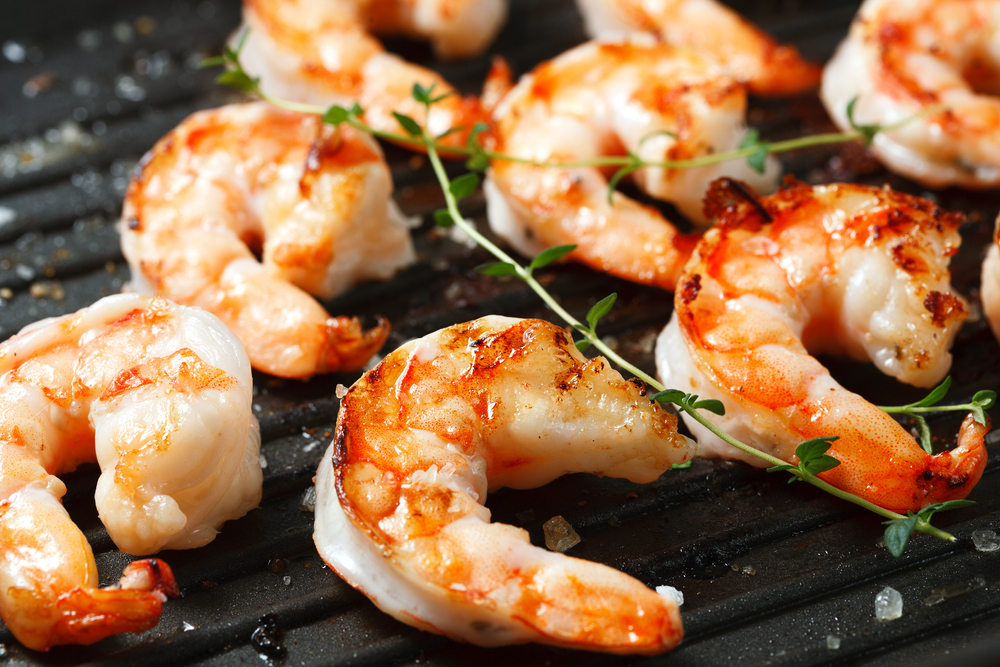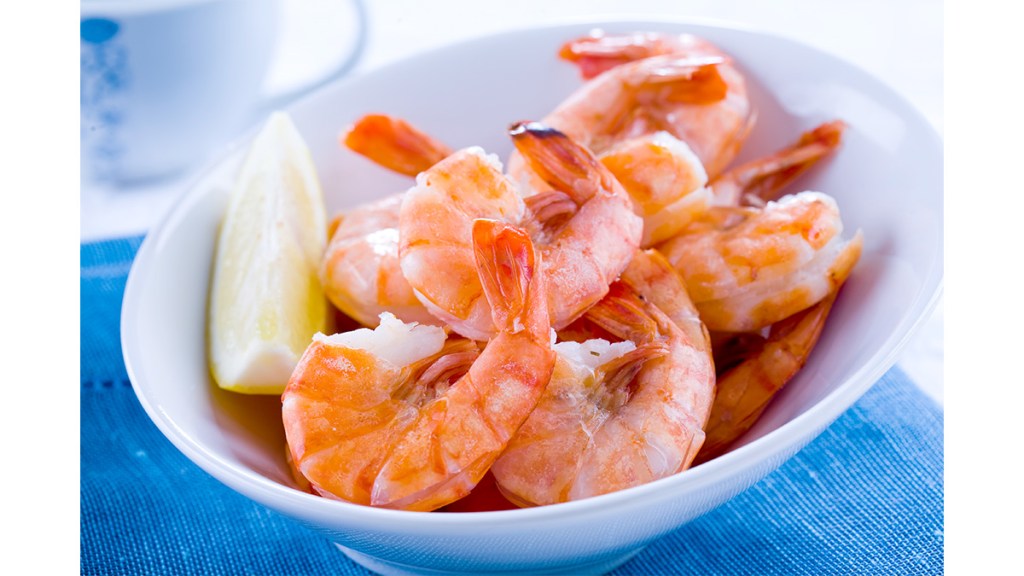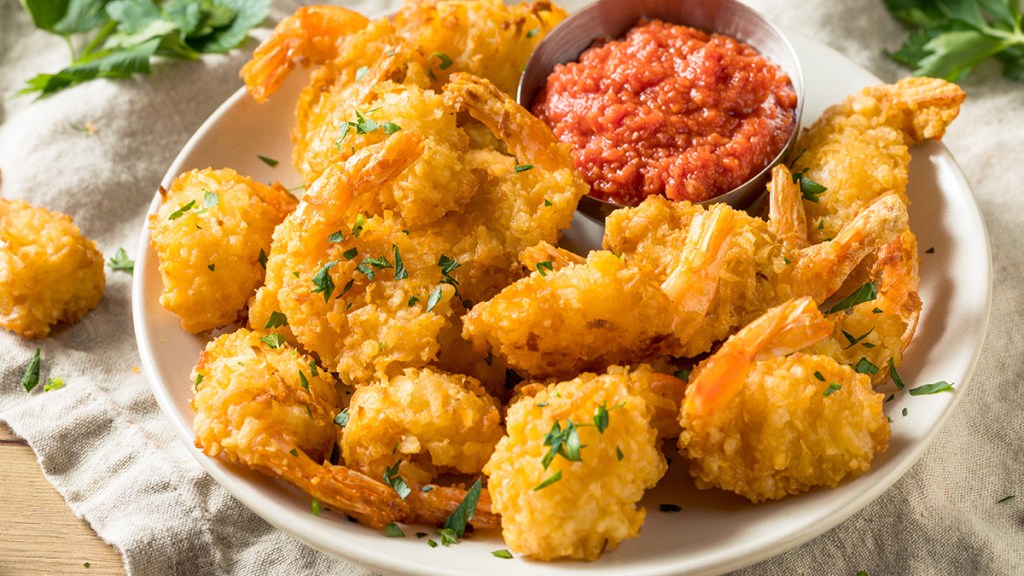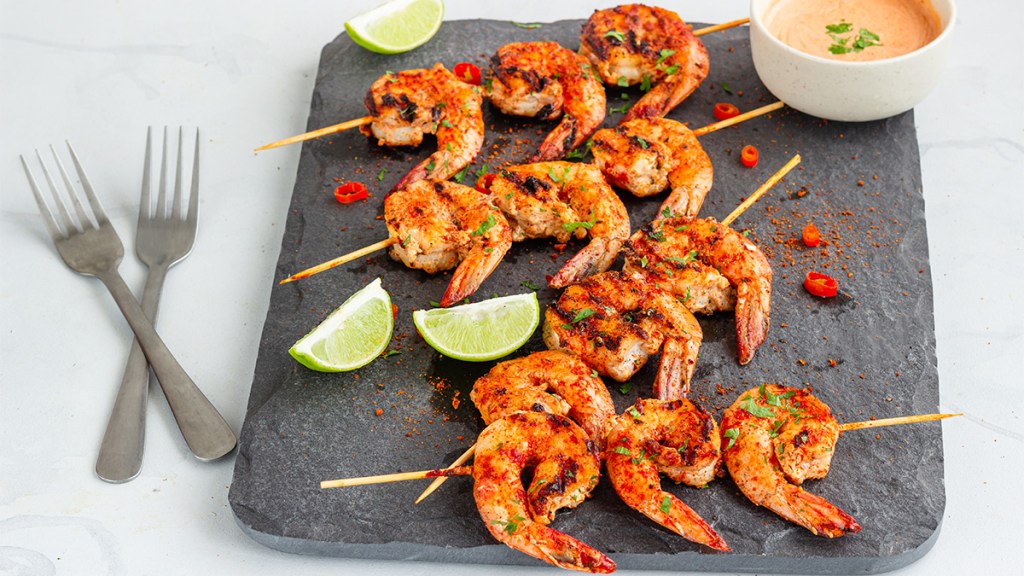Shuck shrimp, fry them, sauté them, or bake them. There are a lot of different ways to enjoy them, and they’re a simple way to make meals taste more like seafood. That’s why it’s so annoying when you heat up leftovers and the shellfish gets tough and chewy. So, we asked a professional chef what his favorite way is to reheat shrimp. Here are some extra options to suit your needs. If all this talk about shrimp makes you hungry for seafood, we’ve also included a few recipes that are great for warming up the next day. Just keep scrolling to learn more.
Shrimp is one of my favorite foods. There’s just something about that sweet, briny flavor that I can’t get enough of. Whether it’s a shrimp pasta dish, shrimp tacos, or good old fashioned garlic shrimp, I’m all about it But like many people, I often end up with leftovers after cooking up a big batch Which leaves me asking – is it safe to reheat shrimp?
I did some digging to find the answer. Keep reading to learn everything you need to know about safely reheating shrimp, including the best methods, what to avoid, and more tips to revive shrimp without ruining it
How to Safely Reheat Shrimp
Reheating shrimp can be a bit tricky With their delicate texture, shrimp can easily turn from tender and juicy to rubbery and dry Not exactly appetizing.
The key is to heat shrimp gently and slowly. High, direct heat can cause the proteins in shrimp to toughen and squeeze out moisture. To avoid this, use lower heat and indirect heating methods when reheating. Here are some safe ways to revive leftover shrimp.
On the Stovetop
One of the simplest ways to reheat shrimp is on the stovop. This method produces juicy, flavorful shrimp without drying them out.
Start by bringing about 2 inches of water, broth, or wine to a gentle simmer in a skillet or pot. The liquid will heat the shrimp indirectly, preventing overcooking. Once hot, remove from heat and add shrimp to poach for 1-2 minutes until warmed through.
For extra flavor, add herbs, lemon, garlic or other aromatics to the poaching liquid. Just don’t let it come to a full boil, or you risk overcooking the shrimp.
In the Oven
The oven allows you to easily reheat large batches of shrimp. While it takes a bit longer than the stovetop, the shrimp come out tender and moist.
Preheat oven to 300°F. Spread shrimp in a single layer on a rimmed baking sheet. Drizzle a bit of water, broth, or oil over the top to prevent drying out.
Cover tightly with foil and bake for 10-15 minutes, until warmed through. Check frequently to avoid overbaking.
In the Skillet
Reheating shrimp in a skillet is quick and helps revive their flavor. I like to melt a bit of butter or oil first for extra richness.
Once hot, add shrimp and cook over medium-low heat for 1-2 minutes. When the shrimp start sizzling, add a splash of water or wine and immediately cover. The steam will gently reheat the shrimp.
Finish with a squeeze of lemon juice for some brightness.
What Not to Do When Reheating Shrimp
While there are several safe ways to reheat shrimp, there are also mistakes to avoid.
Don’t Use High Heat
High, direct heat can overcook shrimp in an instant. Their proteins will tighten and squeeze out moisture, leaving you with rubbery, flavorless shrimp.
Avoid methods like broiling, grilling, or sautéing over high heat. Stick to more gentle reheating methods.
Don’t Microwave Shrimp
It may be fast, but the microwave produces disastrous results. The high heat leads to dry, rubbery texture.
Microwaved shrimp also tend to get tough and stringy. Save yourself the disappointment and use another reheating method.
Don’t Reheat More Than Once
Reheating shrimp more than once increases the risk of bacteria growth. Shrimp is highly perishable, so it’s best to only reheat it one time.
After that, toss any leftover shrimp to avoid potential foodborne illness. Don’t take chances with seafood safety.
Tips for Reheating Shrimp
Follow these tips to revive shrimp without ruining the texture:
-
Let shrimp come to room temperature before reheating. Cold shrimp from the fridge will overcook faster.
-
Add a bit of water, wine, broth or oil when reheating. This provides moisture and prevents drying out.
-
Cook shrimp just until heated through, about 1-2 minutes. Avoid overcooking or you’ll get rubbery results.
-
Reheat sauce or seasoning separately, then add shrimp at the end. This prevents overcooking.
-
If reheating a shrimp-based dish, consider separating the shrimp and sauce/ingredients before reheating everything together.
-
Use lower heat and indirect heating methods like poaching, steaming or baking.
-
Check shrimp frequently and remove immediately once hot. A thermometer should read 140°F.
How Long Does Reheated Shrimp Last?
Like raw shrimp, reheated shrimp doesn’t have a super long shelf life. Here’s how long reheated shrimp will last in the fridge:
-
1-2 days: Best if eaten within a day or two for optimal flavor and texture.
-
3-4 days: Shrimp will still be safe to eat after 3-4 days but quality starts declining. Use for casseroles or dishes where texture isn’t as important.
To maximize freshness, make sure shrimp is cooled properly after initially cooking, stored in an airtight container and kept cold at 40°F or below.
Only reheat shrimp once, and use within 4 days for best quality. Discard any shrimp that has an off smell or appearance.
Frequently Asked Questions
Got more questions about safely reheating shrimp? Here are some common FAQs:
Does shrimp need to be fully thawed before reheating?
Yes, shrimp should be completely thawed before reheating for food safety. Partially thawed or frozen shrimp takes longer to reheat, raising the risks of bacteria growth.
Can you reheat cooked shrimp from frozen?
It’s not recommended. Thawing is too slow, creating a temperature danger zone where bacteria can multiply quickly. For safety, fully thaw frozen shrimp in the fridge before reheating.
Is leftover reheated shrimp safe to eat?
If stored properly, leftover reheated shrimp can be safely eaten within 3-4 days. Be sure to refrigerate in an airtight container and use by the 4-day mark for best quality. Discard any shrimp that smells or looks off.
Can you reheat shrimp in the air fryer?
Yes, an air fryer can reheat shrimp nicely at around 300°F for 3-5 minutes. Use a light mist of oil to prevent drying out. Shake the basket halfway for even cooking.
How do you know if reheated shrimp went bad?
Signs shrimp has spoiled include an ammonia-like or fishy odor, mushy texture, or unusual appearance. Discard any leftover shrimp with these qualities. When in doubt, remember it’s better to be safe than sorry.
The Takeaway on Reheating Shrimp
Yes, you can safely reheat shrimp for tasty leftovers! Just be sure to use gentle, indirect heating methods like poaching, baking or steaming. Avoid high direct heat, microwaving, or reheating more than once.
Store cooked shrimp properly and consume within 3-4 days for the best flavor, texture and food safety. Follow these simple tips and you’ll be enjoying your leftover shrimp without any worries. Trust me, nothing beats a reheatable shrimp dish when you’re feeling lazy and hungry!

Do shell-on shrimp need to be peeled before reheating?
When you heat up shell-on shrimp from a seafood boil or a peel-and-eat appetizer, it’s best to leave the shell on so the seafood’s juices stay inside. Once reheated and slightly cooled, you can remove the shells and dig in. (Click through to find out how to cook shrimp with the shell on to save time and make delicious food. ).

2 shrimp recipes worth reheating
Shrimp’s versatility makes it a blank canvas for your favorite seasonings and cooking methods. Start with these two recipes from our test kitchen. They taste great hot or cold the next day! (Click through for crab fries and stuffed shrimp recipes that are both tasty.) ).

Convenient store-bought marmalade creates the dipping sauce for these delicious treats.
Ingredients:
- 2 cups shredded sweetened coconut
- 2 cups plain dry breadcrumbs
- 4 eggs, beaten
- 2 cups all-purpose flour
- ½ tsp. salt
- 1 lb. peeled, deveined large shrimp
- ½ cup olive or vegetable oil
- ½ cup orange marmalade
Directions:
- Active: 20 mins.
- Total time: 20 mins
- Yield: 10 servings
- Line large baking sheet with parchment paper. In bowl, combine coconut, breadcrumbs and salt. Add eggs and flour to 2 separate bowls. Dip shrimp in flour, then eggs, and finally the coconut mixture, making sure to shake off any extra. Transfer to parchment-lined baking sheet.
- In skillet, heat oil over medium-low. Cook shrimp in groups, turning them over once, for two to three minutes on each side until golden. Drain on paper towels. In a bowl that can go in the microwave, melt the marmalade by stirring it every 15 seconds. Serve shrimp with marmalade.

Food Network star Jamie Oliver infuses this simple dish with bold flavors, thanks to a quick 3-ingredient spice rub.
- 8 (10-inch) skewers
- 2 Tbs. olive oil
- 1½ tsp. paprika
- ½ tsp. garlic powder
- ½ tsp. crushed red pepper flakes
- 1 lb. peeled, deveined jumbo shrimp (21 to 25)
- 1 onion, chopped
- 1 tsp. curry powder
- 1 cup basmati rice
Directions:
- Active: 15 mins
- Total time: 45 mins
- Yield: 4 servings
- If using wooden skewers, soak in water 15 minutes. Prepare grill for medium-high direct-heat cooking. In bowl, whisk 1 Tbs. oil, paprika, garlic and pepper flakes; add shrimp. Toss until coated. Thread onto skewers.
- Add the onion and curry to the pot and heat the rest of the oil over medium heat. Cook, stirring, until starting to soften, 7 to 8 minutes. Add rice and 2½ cups water; bring to a boil. Reduce heat to low. Cover; cook until tender, 15 to 20 minutes. Grill skewers, turning once, 3 to 5 minutes per side. Serve with rice. Garnish as desired.
